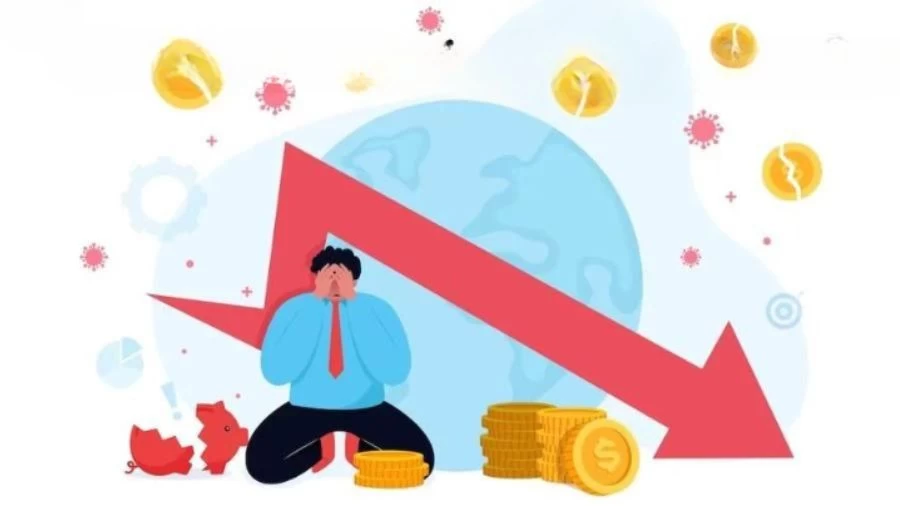
What is a Negative Interest Rate? How Does Negative Interest Rates Work?
A negative interest rate is an unconventional monetary policy tool employed by central banks, causing interest rates to fall below 0%, with the primary aim of incentivizing spending and investment while deterring cash hoarding during deflationary periods.
by Kowsalya
Published Aug 07, 2023 | Updated Dec 18, 2023 | 📖 4 min read
What is a Negative Interest Rate?
A negative interest rate is an unconventional monetary policy tool where interest rates fall below 0%. Central banks implement this strategy during deflationary periods when there are signs of consumers hoarding money, leading to decreased demand and falling prices.
In a negative interest rate environment, borrowers are paid interest rather than being charged, to encourage spending, lending, and investment while discouraging cash hoarding.
To achieve this, central banks may charge commercial banks on their reserves, although these negative rates are often not directly passed on to customers. This policy is used when traditional monetary measures, such as lowering interest rates to zero, are insufficient to stimulate economic growth.
How Does Negative Interest Rates Work?
Negative interest rates are an extraordinary monetary policy tool used by central banks to combat economic challenges, particularly during deflationary periods.
In a negative interest rate environment, interest rates fall below zero, and borrowers are credited interest instead of being charged. This unorthodox approach is designed to spur economic activity by encouraging lending, spending, and investment while discouraging individuals and institutions from hoarding cash.
When negative interest rates are imposed, cash deposited at banks results in a storage charge rather than interest income, aiming to prompt banks to lend money to borrowers rather than keeping funds idle. The ultimate goal is to counteract the adverse effects of deflation and stimulate economic growth, making negative interest rates a critical tool in a central bank's arsenal when traditional monetary measures prove insufficient.
What Are the Consequences of Negative Rates?
The consequences of negative interest rates can have significant impacts on the economy and financial institutions. When a central bank implements a negative interest rate policy (NIRP), it essentially charges commercial banks for keeping their excess reserves stored at the central bank. This strategy aims to encourage lending, spending, and investment while discouraging cash hoarding.
However, the consequences can be mixed. While NIRPs theoretically stimulate economic activity, there is uncertainty about their effectiveness in practice. These policies may lead to a reduction in profit margins for commercial banks, potentially causing them to lend less, and the risk of a run on banks as depositors seek alternatives to avoid negative rates. The outcome and effectiveness of NIRPs in stimulating economic growth remain a topic of debate in the financial world.
It's important to note that NIRPs primarily impact financial institutions and their reserves, and individual depositors typically aren't charged negative interest rates on their bank accounts. The full extent to which NIRPs influence economic conditions beyond the banking system is a matter of ongoing study and analysis, and their long-term effects are still a subject of discussion among economists and policymakers.
Embark on a journey through the expansive universe of Finance by delving into the diverse and informative content offered at MarketsHost.
How Can Interest Rates Turn Negative?
Interest rates can turn negative as part of a monetary policy strategy, known as the Negative Interest Rate Policy (NIRP), implemented by central banks during economic challenges. In such a scenario, nominal interest rates fall below zero, and borrowers receive interest instead of paying it to lenders.
This unconventional approach is typically employed in the face of deflationary pressures, encouraging spending and investment. Central banks may charge commercial banks on reserves, compelling them to spend rather than hoard cash.
In a negative interest rate environment, storing cash incurs a fee instead of earning interest, impacting consumers and banks. The goal is to stimulate economic growth by discouraging cash hoarding and promoting lending. While negative interest rates are an unusual monetary tool, their effectiveness and broader impact on the economy remain subjects of ongoing debate and scrutiny.
What Are the Risks of Negative Interest Rates?
Negative interest rates, while intended to stimulate economic activity, carry certain risks and potential drawbacks. One of the primary concerns is that negative rates may have adverse effects on the profitability of banks.
Banks often have assets, such as mortgages, with contractual ties to prevailing interest rates. When rates turn negative, it can squeeze the profit margins of financial institutions to the extent that they become less inclined to lend money, which can undermine the central bank's efforts to boost lending and spending.
Another risk associated with negative interest rates is the potential for deposit holders to withdraw their money from the banking system and hoard physical cash. While a significant withdrawal of funds from banks could initially lead to a run on the banks, the overall effect may be a rise in interest rates, contrary to the intended outcome of negative interest rate policies.
What is a Negative Interest Rate-FAQs
1. What is a negative interest rate?
A negative interest rate is a monetary policy measure where nominal interest rates fall below zero.
2. Why would interest rates be negative?
Negative interest rates are usually employed by central banks as an unconventional policy tool during economic downturns.
3. How do negative interest rates impact borrowers and lenders?
Negative interest rates mean that borrowers receive interest payments from lenders, making borrowing cheaper.
4. What are the potential effects of negative interest rates on the economy?
Negative interest rates can influence various economic aspects. They may weaken a country's currency on the foreign exchange market, impact stock markets, potentially lead to increased demand for bonds, and reshape consumer behavior and spending patterns.
5. Are negative interest rates a common policy tool?
Negative interest rates are relatively rare and often considered an unconventional policy measure.




